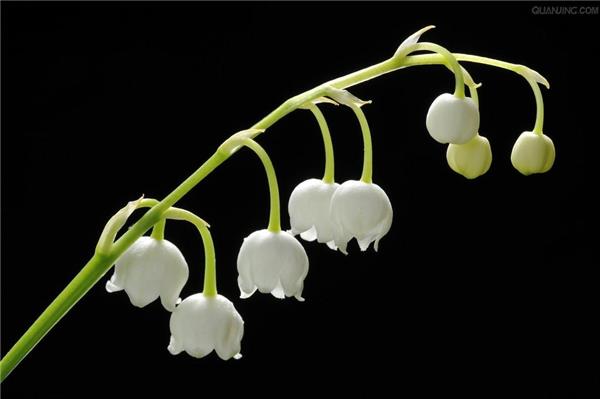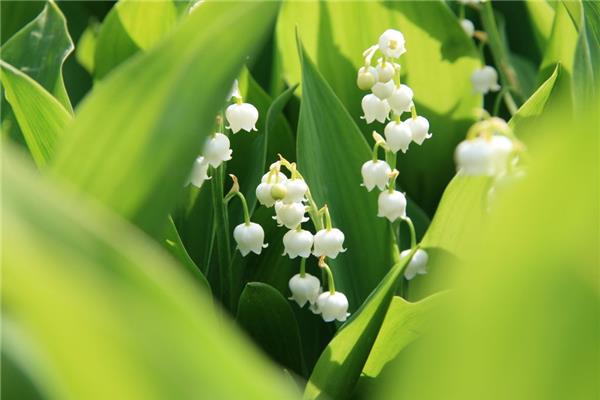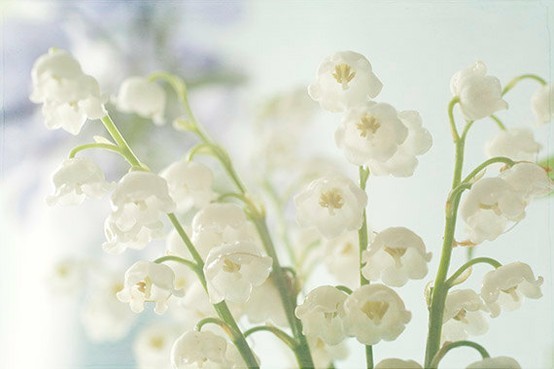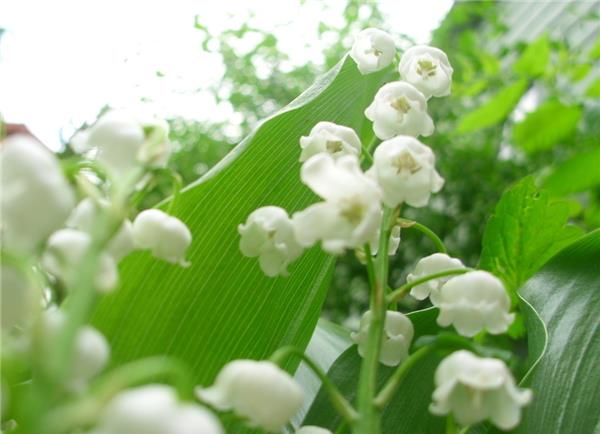What are the matters needing attention in the culture of lily of the valley?
The entire plant of the lily of the valley is very attractive, because from the plant to the fruit, every part of the lily of the valley can be described by the word "small", so it has a unique ornamental value, very suitable for indoor cultivation.

1. Morphological characteristics of lily of the valley
Plants: lily of the valley plant short, perennial herbs, about 20 cm high, underground there are many branches and creeping spreading rhizomes.
Stems and leaves: In spring, 2 - 3 ovate or narrow ovate leaves with arc-shaped veins grow from the terminal bud at the apex of the rhizome. The leaves are 13~15 cm long and 7~7.5 cm wide. The apex is acute and the base is slightly narrow. The base has several sheath-like leaves. The leaves are narrow ovate or broadly lanceolate with arc-shaped veins. The leaves are 2-3. Basal, and there are several sheath-like membranous scales at the base. The leaves are lustrous. The petiole is about 16 cm long and embraces each other in sheath shape, with several membranous scales in sheath shape at the base.
Flowers: campanulate, pendulous, racemes, bearing 6-10 flowers, ca. 7 mm long, ca. 1 cm wide milky white; scape protruding from scale axils; racemes biased to one side; bracts lanceolate, membranous, perianth apex 6-lobed, lobes ovate-triangular; stamens 6; styles shorter than perianth.
Fruit: Spherical dark red berry in autumn, poisonous, with 4 - 6 oval seeds, flat. It is an excellent potted ornamental plant, usually used for flower beds and small cut flowers, but also for ground cover plants, and its leaves are often used as flower arranging materials. The flowering period is usually in April to May in early summer, and the fruiting period is in June to July.

Second, the cultivation of lily of the valley precautions
1. Propagation: to divide the rhizomes and rhizomes end of the small bulb culture, that is, plant culture. Spring and autumn can be, November is the best. There are buds of different sizes on the rhizomes. After the ground withers in autumn, the rhizomes are dug up, and each terminal bud is cut off with a section of rhizomes for planting, so that a new plant can be formed. The plump buds can flower in the spring of the following year after plant division, and the small buds need to flower after 1 year. Seeds washed from red-ripened berries in autumn can be sown directly in open seedbeds and germinate the following spring.
2. Cultivation conditions: lily of the valley likes semi-shade, moist, cool environment, cold resistance, avoid hot. As long as there are proper shade conditions, they will be quickly cultivated by spreading rhizomes. Shade and moist fertile soil are important conditions for good planting, ideal for soils containing humus and sand, which are both fertile and hydrophobic. In modern factory greenhouse production, pollution-free cultivation was adopted to improve flower quality and yield, avoid excessive application of nitrogen fertilizer and use less ammonium nitrogen fertilizer, which deserves attention and attention.

3. Fertilizer water: lily of the valley is strong in nature, extensive in management, planted with more than 5 cm of soil, irrigated with water after planting. If spring germination, topdressing every 15 days 1 decomposed cake fertilizer, flowering lush, pay attention to watering when dry days. After the flower stems are taken out, fertilizer should be stopped; after the flowers wither, the pedicels should be cut off in time, and then topdressing 1 to 2 times can promote the germination of new tillers of their rhizomes. In late autumn, when the aboveground part withers, it is covered with rotten leaves and cow dung to protect the rhizome and its dormant buds from overwintering.
4. Temperature: potted plants can be dug up in November with buds and stored at 3℃~5℃ for 14~21 days, and then taken out and planted in pots, but do not make it see light, the temperature is maintained at 12~14℃, and it is only after the buds are unearthed that it sees light. At this time, the temperature is controlled between 20~22℃. Then water and top dressing properly. Cultivated properly, it will flower later. If you do not give low temperature and dark treatment in advance, often make the leaves grow uneven, flowers and plants may not germinate.
5. Change pot: planting every 3~4 years to plant once, potted plant more than choose fertilizer and large rhizome buds, each potted 4~5 buds, need to change pot once a year.
6. Diseases and pests: brown spot disease damage, with 75% chlorothalonil wettable powder 700 times liquid spraying.

Lily of the valley is not difficult to raise compared to other plants, because it can survive even in the wild, but in order to ensure its ornamental value, we still have to carefully care for it.
Related
- Wuhan Hospital Iron Tree Blooming Result Was Instantly Frightened by the Gardener Master
- Which variety of camellia is the most fragrant and best? Which one do you like best?
- What is the small blue coat, the breeding methods and matters needing attention of the succulent plant
- Dormancy time and maintenance management of succulent plants during dormancy
- Minas succulent how to raise, Minas succulent plant pictures
- What are the varieties of winter succulent plants
- How to raise succulent plants in twelve rolls? let's take a look at some experience of breeding twelve rolls.
- Attention should be paid to water control for succulent plants during dormant period (winter and summer)
- Watering experience of twelve rolls of succulent plants
- Techniques for fertilizing succulent plants. An article will let you know how to fertilize succulent plants.



